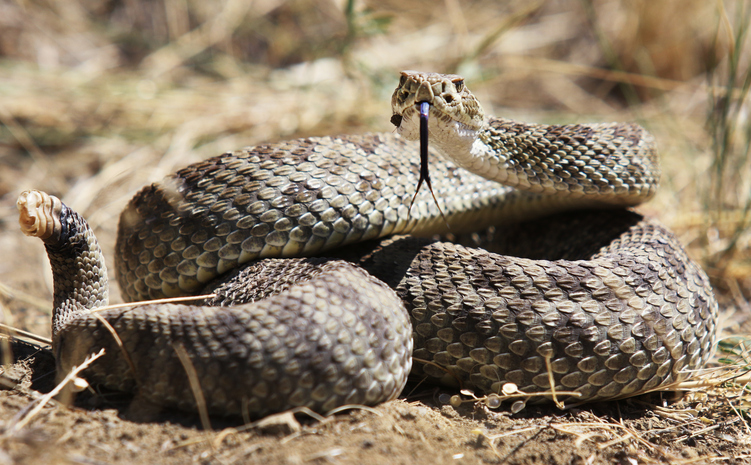Chances are good Fido likes to take walks. Luckily for your pup, Phoenix metro offers myriad dog-friendly hiking spots on the city’s 41,000 acres of park and preserve land, from Dreamy Draw and Papago Park to scenic Waterfall Canyon Trail in the White Tank Mountains.
Unfortunately, your pooch isn’t the only wildlife lurking on these desert trails. According to the Arizona Poison and Drug Information Center, there are 17 types of rattlesnakes found throughout the state. All of them are venomous. Rattlers such as the Western Diamondback were mostly confined to wild areas until recently, when reports of stray snakes in populous areas started rising.
This February alone, Phoenix’s Herpetological Society reported more than two dozen calls about these fanged beasts. With sightings on the rise, it’s important to protect your pet and know what to do in an emergency.
Rattlesnake Bite Knowledge Quiz
What should you do if Spot wanders too close to a rattlesnake? Take our quiz to test your serpent sense.
1. How can you tell a rattlesnake apart from its slithering sisters, if the rattle is not visible? Look for:
A. Vertical pupils (like a cat’s eye)
B. Hollow fangs that retract
C. A triangle-shaped head
D. All the above
Answer: D
In addition to their signature rattle, these snakes have cat-like eyes, triangular heads and long fangs that fold in.
2. Is there a pet vaccine that protects against snakebites?
A. Yes
B. No
Answer: A
Red Rock Biologics makes a vaccine that protects against Western Diamondback venom, normally administered when your pet is around 3-4 months of age. It may also provide protection from several other species’ venom. If you live or hike in areas known to be populated by rattlers, schedule a vet visit to determine if this vaccine would be beneficial to your pet.
3. What precautions should you take when walking your pet in snake-infested areas?
A. Rub cinnamon oil onto your dog’s coat
B. Keep your dog on a leash that’s 6 feet or shorter
C. Only allow your dog near dead snakes
D. a and b
Answer: B
Cinnamon oil will not deter rattlers, and it’s a safer choice to avoid snakes even if they appear dead. Shorter leash lengths allow for more control, so you can steer your pup clear of rocks and holes that may hide rattlers.
4. Symptoms of a snake bite include:
A. Localized swelling and bruising
B. Intense pain
C. Thick, green discharge from the wound site
D. a and b
Answer: D
Puncture wounds may not always be visible on dogs or other pets, so look for swelling and bruising, plus yelps of pain, vomiting, and/or muscle twitches.
5. What should you do if your pet is bitten by a rattler?
A. Immobilize your pet
B. Call your vet, then head to a nearby veterinary facility or hospital
C. Immediately excise (cut) the wound and try to remove the venom
D. Suck out the venom directly from the wound site, then call your vet
Answer: B
Your Emergency Vet in Gilbert
Contact us immediately if you suspect your dog (or other pet) has received any type of snake bite. Do not try to treat the wound yourself unless directed to do so by your vet. Be extra careful with your pup at this time, as the pain may cause him/her to snap or bite.

